The island of Santorini is physically not large, but it’s
probably not that easy to take in many scattered sites around the island via
public transportation. So we decided to rent a car for the day as the most
efficient was to see the south and central parts of the island. Navigating the
narrow lanes of Fira itself was a hassle, but once outside the main town the
roads were mostly pleasant.
Our first stop was at the lighthouse at Santorini’s
southwesternmost cape for some great views to sea and back to Fira from a
different angle. Next was the historic small town of Akrotiri with its hilltop
castle. And third was one of Santorini’s two significant archaeological sites,
the ruins of Ancient Akrotiri.
Ancient Akrotiri was a Bronze Age settlement associated with
the Minoan civilization that was centered on Crete. Settlement at Akrotiri dates from the third
millennium B.C., but the city was at its height for about 500 years until it
was destroyed in the volcanic eruption of Thira in the 16th century
B.C. The modern excavations at Akrotiri only began in 1967 and are
ongoing.
Most of the site is now covered
by a large roof to aid in preservation and visited on raised walkways above the
ruins. Overall, I thought it was one of
the more impressive archaeological excavations in Greece.
By then we were hungry and found a good grill restaurant along
the short walk to nearby Red Beach. The pork
and chicken Kontosouvli at this place was the best, or at least its scent was
the best as the smell of the meats on horizontal spits roasting over charcoal
was what lured us in. Red Beach is a bit
of a walk from its parking area but is popular for its red cliffs eroded into a
red beach below it, unique on an island where most beaches are black volcanic
sand. It’s very pebbly, though.
We considered doing a wine tasting but discovered Santorini
was probably not the best place to do it. One place we stopped at, Boutari, a
vintner with several wineries around different parts of Greece, was charging 20
Euros for a tasting. Meanwhile, at Santos,
the winery that was recommended to us to visit, a kind consortium of island
wine producers, the packages were even more, starting out around 40 Euros per
person including some snack tastings.
Santos is a huge facility with a beautiful view over the caldera and
back to Fira, but seems to be the place that caters to cruise ship shore
excursions, as evidenced by the crowds and fleet of tour buses in the parking
lot. The cruise ship people probably pay at least a hundred Euros for an
excursion that include wine tasting and a couple other short stops.
Santorini’s highest point is actually not along the caldera
rim. Profitis Ilias (Prophet Elias) is 567 meters (about 1,800 feet) in
elevation and topped by a monastery of the same name. Greeks love to build monasteries in hard-to-reach
places! There’s a road to the top, though,
with spectacular views across the entire island.
On the way back down we stopped in Pirgos, the former
capital of Santorini and most populated town on the island. It has a far more authentic feel than Fira, also
with steep twisting narrow lanes, lots of steps, and numerous churches. The
views from its hilltop kastro (castle) would be considered impressive almost anywhere
other than Santorini. We found the café at the summit to be a good place to soak
in the view over a local microbrew (in my case) and fancy herbal infusion (in
Rodrigo’s).
We ended the day with a seafront dinner in Kamari, a lower
key seaside village with a black sand beach on Santorini’s east side. Kamari is
a more typical Mediterranean beach resort village in terms of its scenery,
prices, and crowds – plenty of hotels and restaurants but without the package tour
and cruise ship hordes who concentrate in the most Instagrammable spots. It’s a
beautiful place nonetheless.

 Akrotiri, Greece
Akrotiri, Greece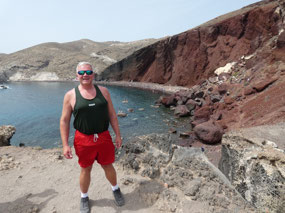
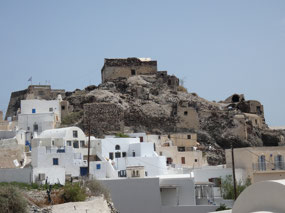
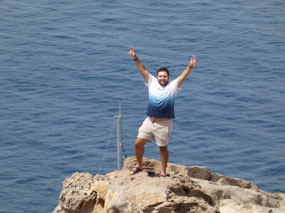



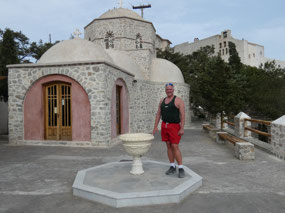
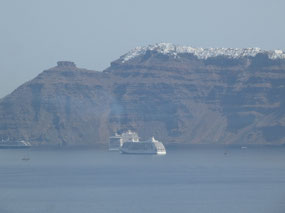
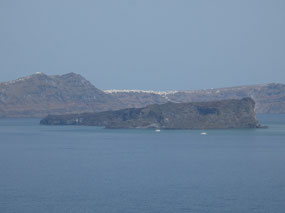
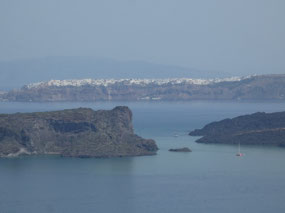

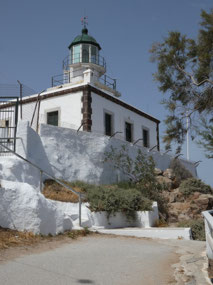
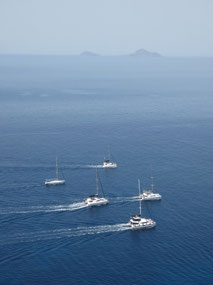

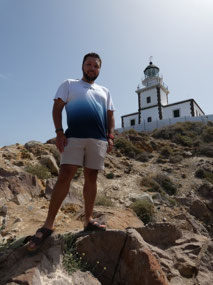
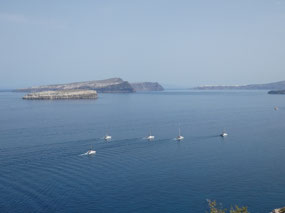
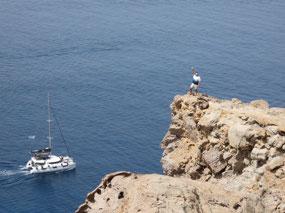
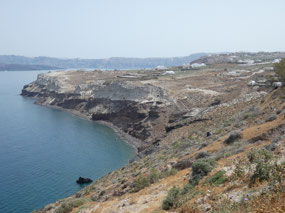
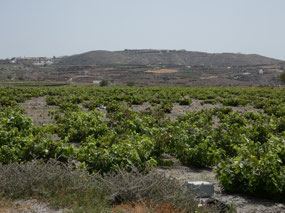
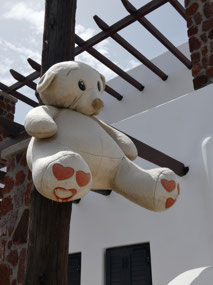
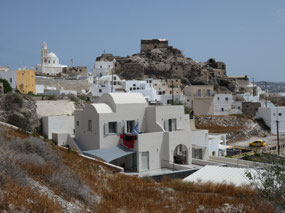
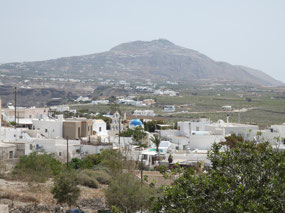
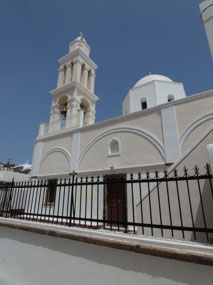
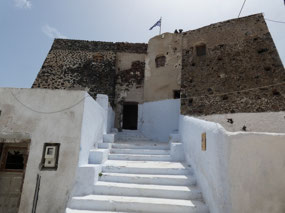
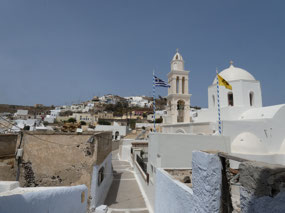
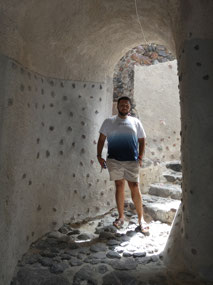

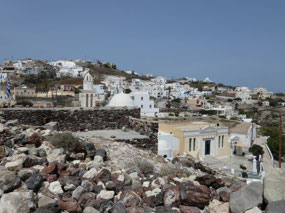
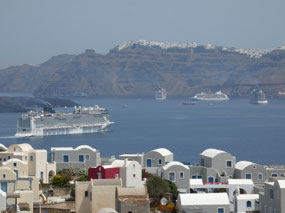
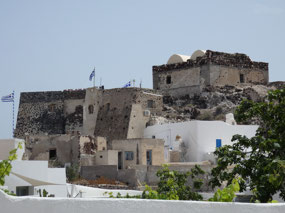
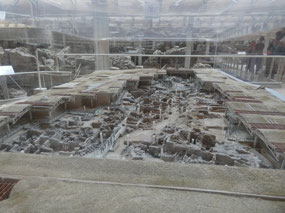
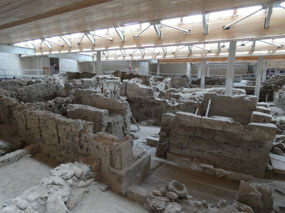
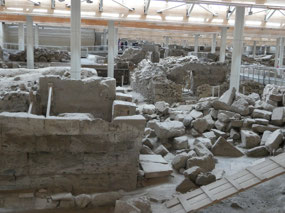
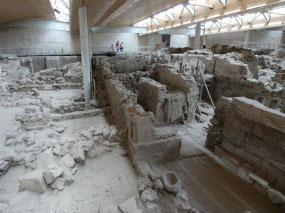
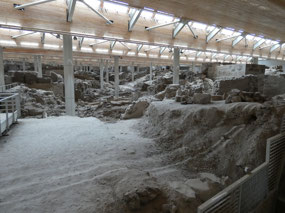
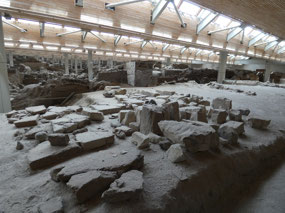
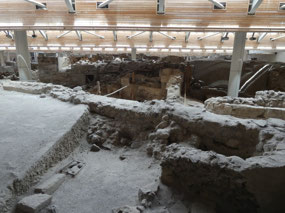
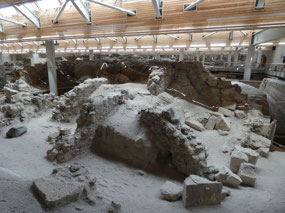
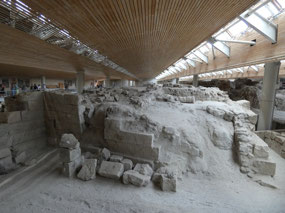
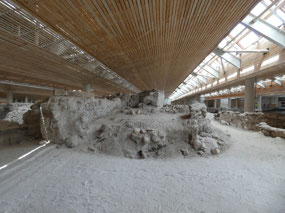
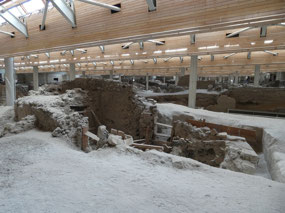
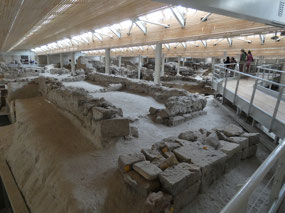
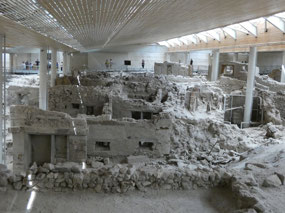
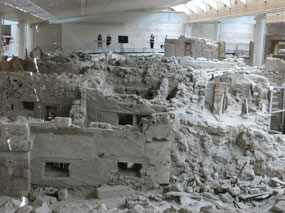
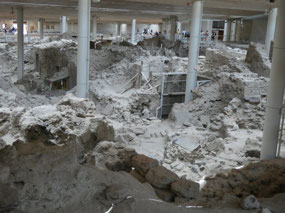
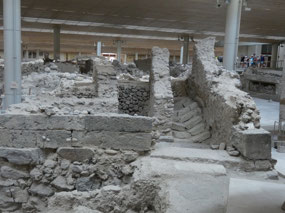
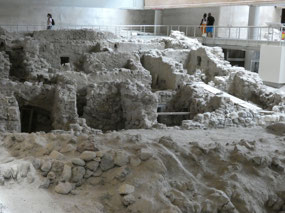
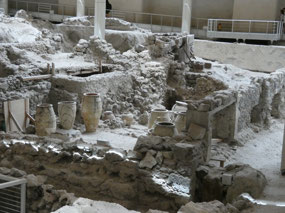
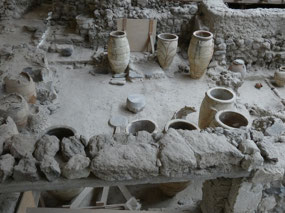
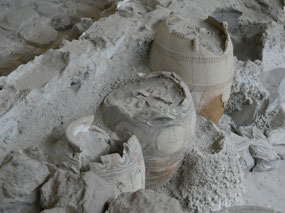
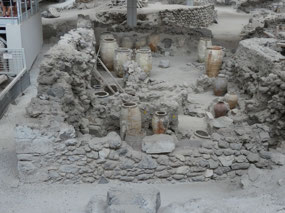
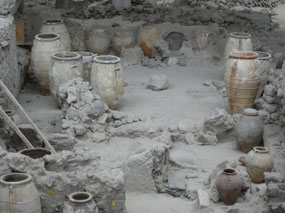
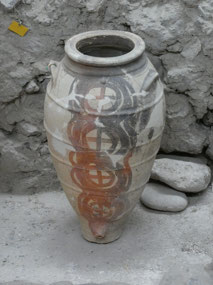
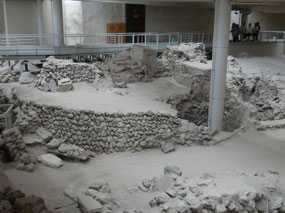
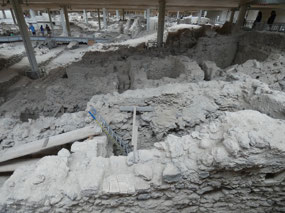
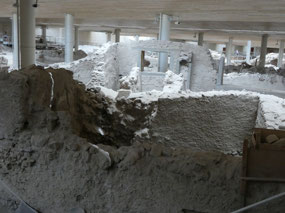
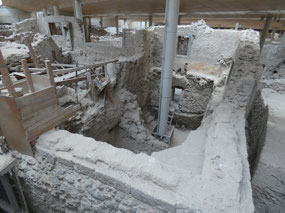

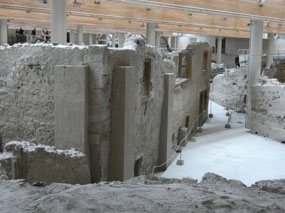
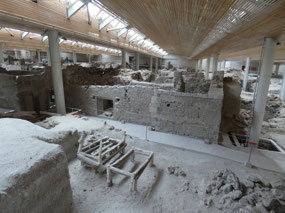
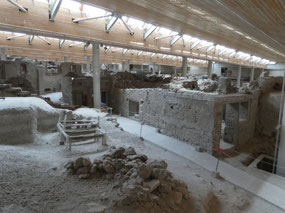
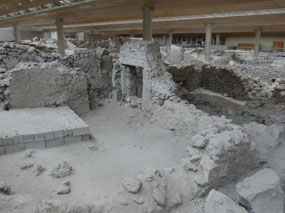
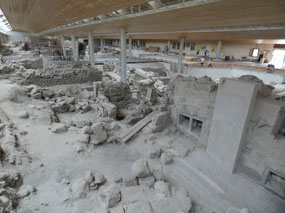
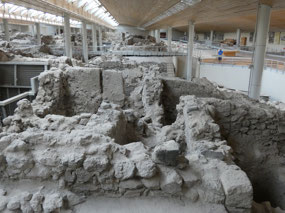
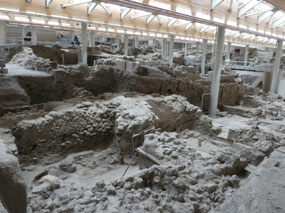
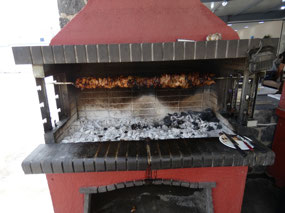
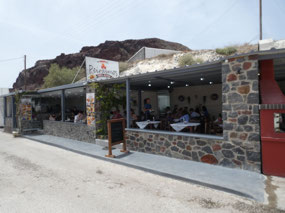
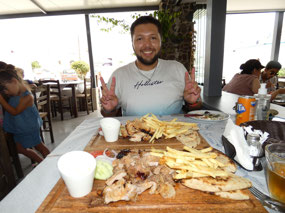
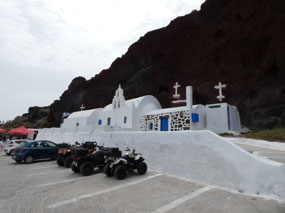
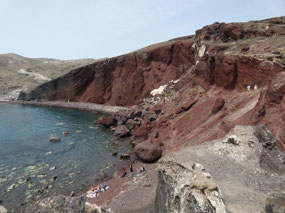
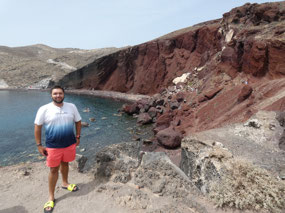
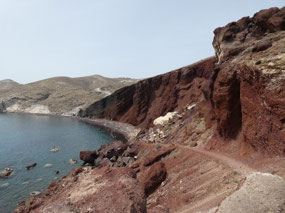
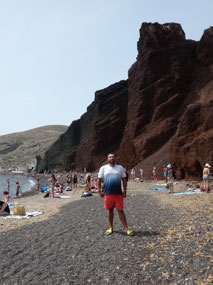
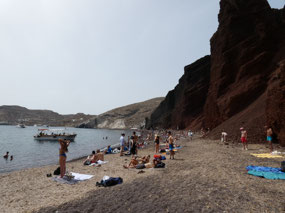
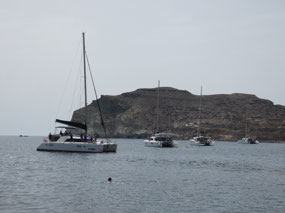

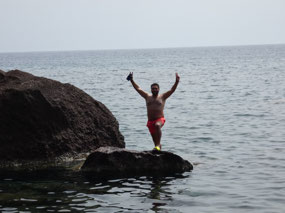
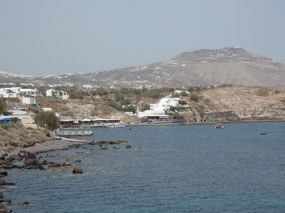
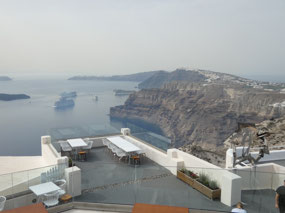
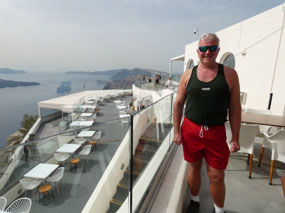
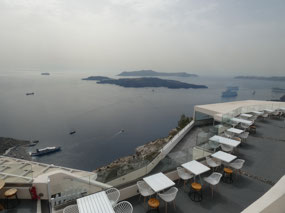
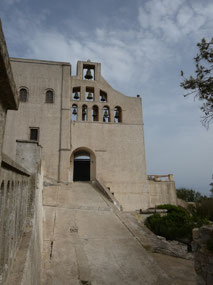

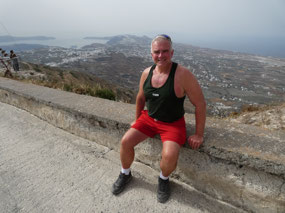
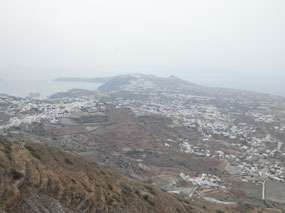

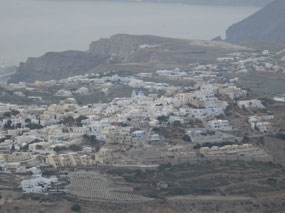
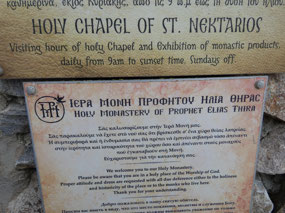
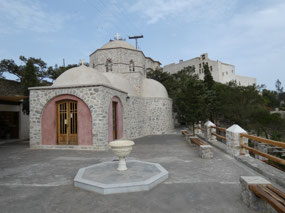
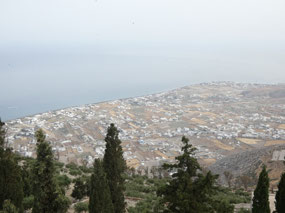


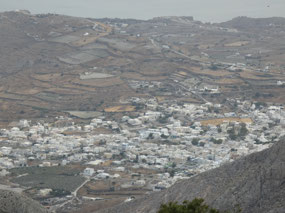

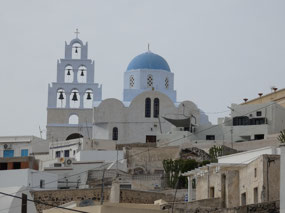
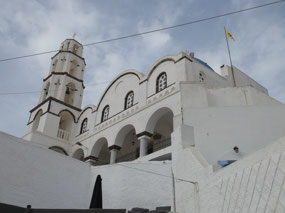

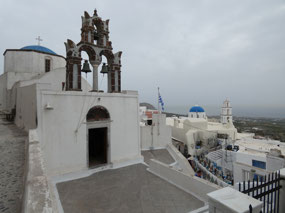
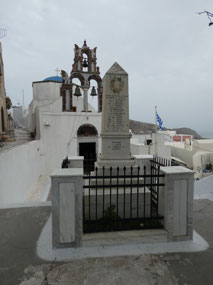
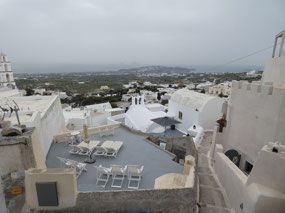
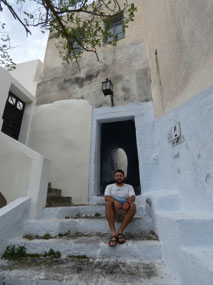
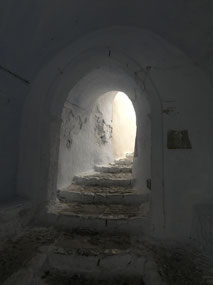
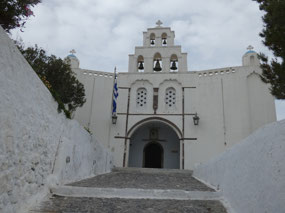
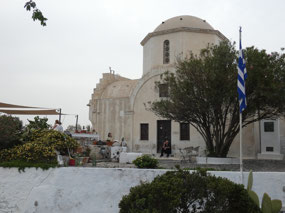
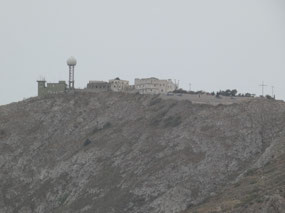
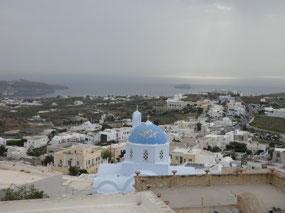
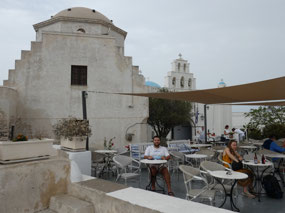
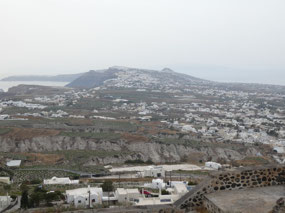


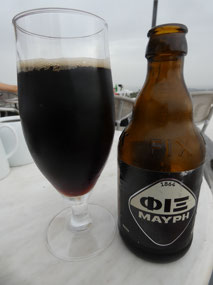
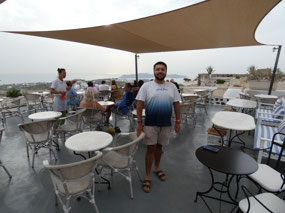
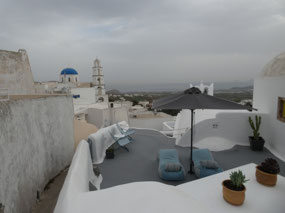
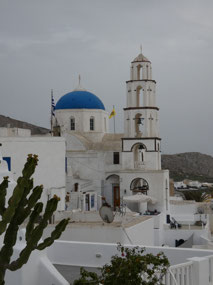
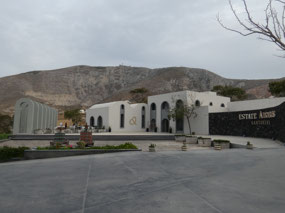


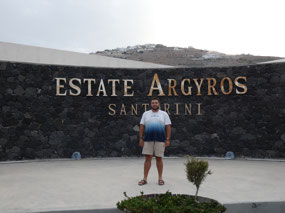
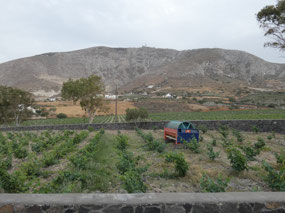
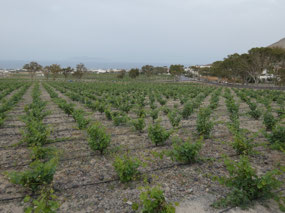
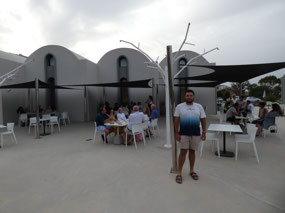
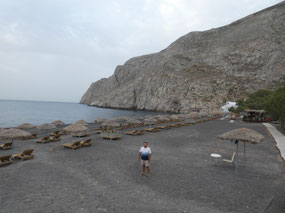
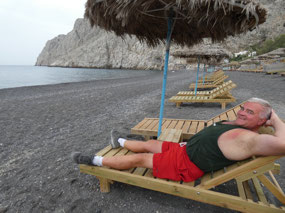
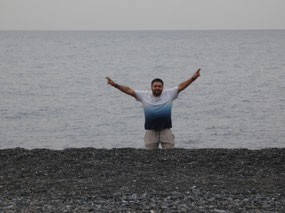
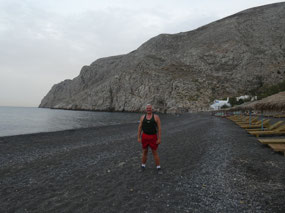

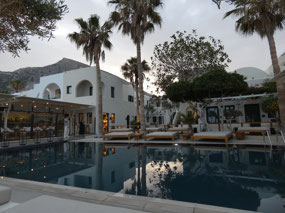
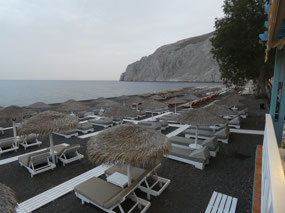
2025-05-23